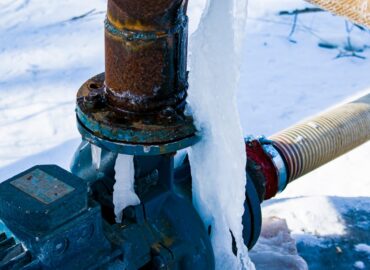From running a modern industrial processing plant to maintaining your own home water pump, flow meters are a necessity whenever fluid is being moved through pipes. Flow meters are one of your primary ways of monitoring the status inside the pipes, as well as potentially giving you early warning of partial blockages and other maintenance issues before they become serious.
The important decision here is choosing the right flow meter for your application, which can vary greatly depending on the fluid, its pressure and speed, and more. Fortunately, several common types of flow meter can cover virtually any need.
The Four Most Common Types of Flow Meters
- Mechanical
Mechanical flow meters are the oldest type of meter, but still suitable for many basic applications. These utilize a flywheel within the pipe. Fluid passing by spins the flywheel, which is translated into speed readings. While simple and cheap, they do not allow for a wide variety of measurements. Also, they can easily become fouled or a source of a clog if the fluid passing through has debris.
- Ultrasonic
Ultrasonic flow meters use measurements of sound moving through a medium to measure flow. An ultrasonic sound wave is first sent against the flow of liquid, then a second wave is sent along with the liquid flow. The differences in travel time are calculated to derive the flow rate. Ultrasonic flow meters are versatile, low maintenance, and work in a variety of different liquid mediums.
- Vortex
Vortex flow meters induce small vortices in the liquid as it flows past, which are then measured by a variety of sensor tabs within the pipe. While complicated and somewhat expensive to install and maintain, vortex meters allow for an extremely wide variety of measurements. They can capture flow rate, mass flow, temperature, pressure, and density – making them easily worth the cost and effort for those who need detailed readings.
- Magnetic
Magnetic flow meters utilize Faraday’s Law of Electromagnetic Induction, in which most liquids passing through a magnetic field generate a small electrical charge. The faster the flow, the higher the voltage, which is easily measured. Magnetic flow meters are entirely non-disruptive and require no mechanisms within the pipe. However, they will not work on certain non-reactive liquids, such as deionized water.
FloRight Pump & Controls
FloRight has the pumps, pipes, automation, and monitoring tools needed to keep your fluids flowing. Whatever your pumping needs, contact us to discuss our services.

